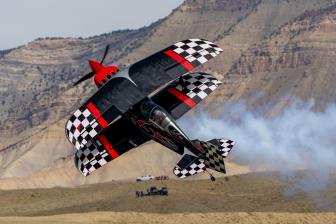Digital Help
Q&A For Digital Photography
| This department will attempt to provide solutions to problems readers may have getting into and using digital cameras, scanning, and using digital photographic images with a computer and different kinds of software. All questions sent to me will be answered with the most appropriate information I can access and provide. However, not all questions and answers will appear in this department. Readers can send questions to me addressed to Shutterbug magazine, through the Shutterbug web site, directly via e-mail to: editorial@shutterbug.com or fotografx@mindspring.com or by US Mail to: PO Box 2830, Lompoc, CA 93438. A Reader's
Experience Switching To An Apple Mac Thank you for your message.
I am sure the readers of Digital Help will appreciate knowing the things
you have found that support making the transition from a PC to a Mac
less burdensome. It is especially good to know as some readers and I
have obtained a response, particularly from Adobe, that what you describe
is not possible. However, in response to the Sandy Noble message in
Digital Help another reader has confirmed what you have said regarding
Adobe's policy. Happy Camper Thank you so much for sharing
your experience, particularly the part about the cross-platform Photoshop
support you received from Adobe. I will be sure to include your message
in Digital Help so others may consider and possibly benefit from your
experience. Critical Scanner
Maintenance Thank you for recounting your scanning experience. I might mention that with just about every flat-bed scanner that has a film scanning capability, the scanner usually calibrates even if there is not a separate physical window, as with some Microtek models. This is usually the top part of the scan area, and it is usually kept clear by an indent in the film carrier. So it is imperative to keep the glass of the scan area as clean as possible, especially at the top where the calibration occurs. Large Flat Screen
Presentation Displays A.
I am not an expert in the area of large plasma displays that can be
driven by a computer. Until recently the high cost had dampened my interest,
as well as the fact that plasma screens are reported to have a shorter
life than an LCD. In addition, I have not seen a plasma display that
compares in image quality to an LCD. Adding Text Information
Like EXIF Data In Scanned Image Files A. The
Browser in Photoshop CS will allow you to type in data in a number of
categories. Of course that is an expensive application just for that
purpose. However, I expect the next version of Photoshop Elements will
include the same Browser capabilities. I would also expect a new version
of Elements is not that far off. Digital Lighting
For Small Product Photography A.
I am assuming you're looking for a light tent setup for small
product photography. The reason I am suggesting the light tent is that
jewelry is usually shiny and polished and reflects light sources like
a mirror. So, to have a soft enclosed light source is essential to get
smooth tones in polished jewelry. |
- Log in or register to post comments


































